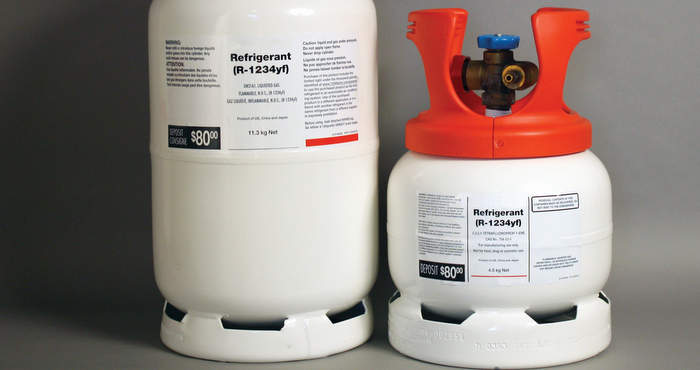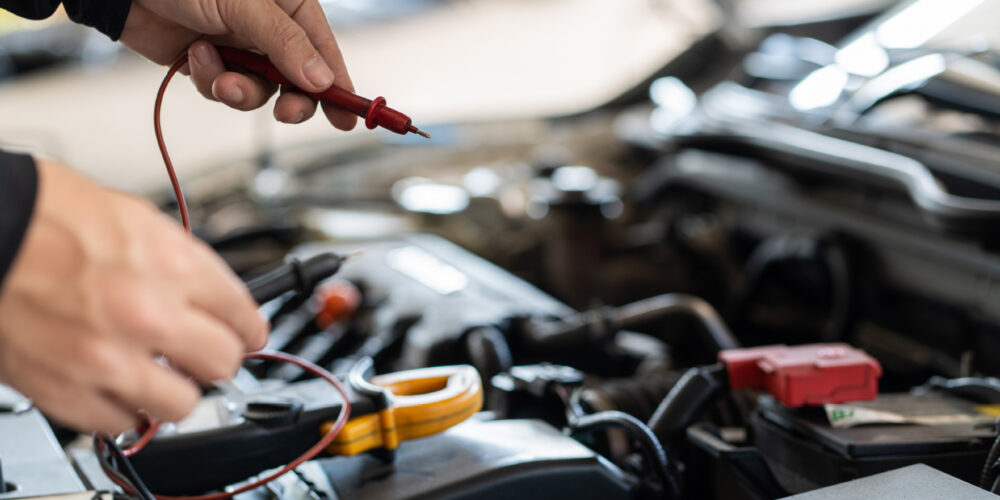Remember that R-1234yf is only mildly flammable. To become flammable, the mixture of air and refrigerant in a closed area like a vehicle cabin would need to be between 6.5% and 12.3% of the chemical vapor. This mixture must then experience a significant amount of energy to ignite it. In some lab tests, a spark the equivalent of a direct short at the battery didn’t ignite it. But flammability is flammability, and precautions must be taken, both for you, the vehicle, your customers and the environment.

Below are the Specific Safety Procedures from the Mobile Air Conditioning Society’s Certification Training Manual.
If you missed our article all about R-1234yf and what it means for you, click here.
• Ensure good ventilation in the work area and do not allow the refrigerant to pool in or under the vehicle, or in any low area such as a stairwell or pit. Keep car doors and windows open when charging the A/C system to prevent an accumulation of refrigerant in case of a major refrigerant leak.
• Remove ALL sources of sparks, flame or high heat from the immediate work area. This may include non-A/C-related equipment such as grinders, welders, dryers and similar equipment. Move equipment with electric motors or switches that spark internally to a safer area. Remember also that a vehicle’s ignition system can produce external sparks under some conditions — take great care to prevent arcing and accidental grounding of electrical circuits.
• Use LED work lights to prevent the risk of a broken bulb in the work area.
• Do not smoke or permit smoking anywhere in or near the work area.
• Keep well-maintained fire extinguishers in the work area and know how to use them.
• Always wear personal protective equipment during service, particularly goggles with side panels and gloves (impermeable to refrigerant). Exposure of the skin to refrigerant may result in frostbite, in which case the affected area should be rubbed with lukewarm water.
• A physician shall be consulted immediately in the event of complaints following exposure to high refrigerant concentrations. Complaint symptoms may include: increased breathing rate, breathlessness, headache, accelerated pulse, dizziness.
• Do not store refrigerant tanks in low areas such as basements or stairwells and do not transport tanks without securing them.
• If the vehicle uses hybrid or all-electric propulsion, follow the correct procedure to deactivate the high voltage electrical system before beginning repairs.
• Prevent accidental release and exposure to refrigerant — only connect service equipment when high-side pressures have decreased, usually after the engine and compressor have been off for three minutes or more.
• Do not allow anyone under the vehicle while recharging the system. Unexpected refrigerant leakage or a sudden release of the pressure valve will pool refrigerant near the ground. Always maintain good ventilation in the work area.
• Each machine or device used to service a system with R-1234yf must be designed and approved for use with a flammable gas. Do not attempt to use equipment designed for other refrigerants on this system.
• Read the label on the vehicle and know the correct amount of refrigerant to return into the system after evacuation.
Article courtesy Underhood Service.













